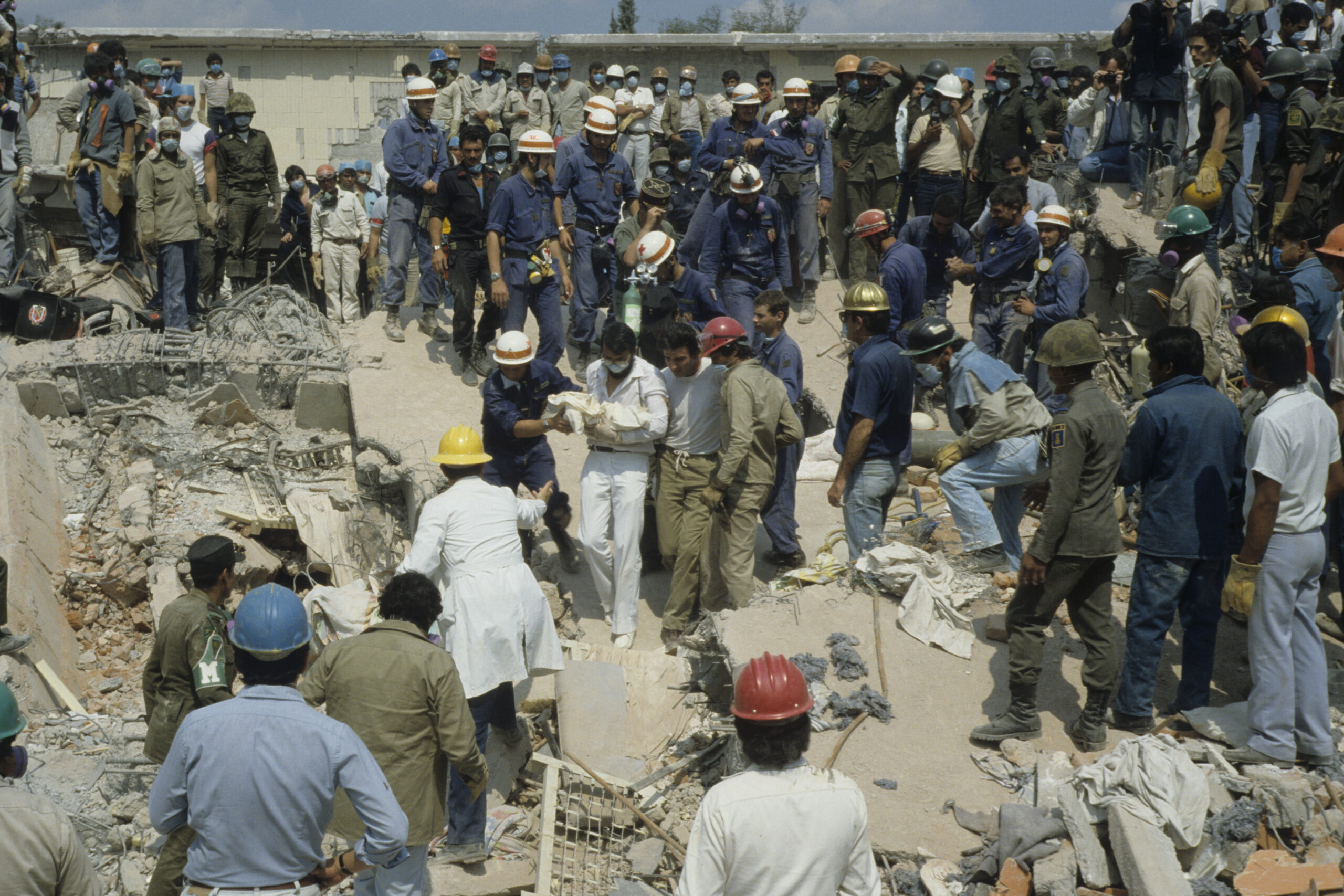Photo of citizen rescuers in 1985 earthquake: United Nations (CC)
Recent earthquakes in Mexico City have reinvigorated grassroots organizations’ appeals for municipal transparency and financial accountability. Civilian groups such as Los Topos and Transparencia Mexicana are placing pressure on federal and local officials as affected areas begin rebuilding.
Grassroots platforms were similar catalysts for emergency management reform following the historic earthquakes on Sep. 19, 1985 that struck Mexico City, costing over 8.3 billion dollars in losses and resulting in more than 10,000 fatalities. Federal reforms included the creation of the Natural Disaster Fund (FONDEN). Furthermore, the state’s absence in coordinating emergency response was highly criticized and was associated with the inefficiency of the Institutional Revolutionary Party’s (PRI) political machine.
Overall, post-1985 Mexico was defined by a climate conducive to social and political change. Civilian frustration and despair reached a boiling point following the 1985 earthquakes. In fact, the crisis was part of the political momentum that overthrew Mexico’s single-party rule. Although Mexico has made progress, tensions between the state and its citizens have been tested again in the wake of the Sep. 2017 earthquakes.
“There was very little expectation that the rescue efforts would be run by state teams,” wrote Caitlin Yates, a global policy student at the Lyndon B. Johnson School of Public Affairs who is currently working abroad in Mexico City. “The rationale behind the immense amount of citizen response was that the government would not be able to help in the way that the citizens could.”
Journalists Julia Preston and Samuel Dillon echoed similar civic distrust back in 1985 in their book Opening Mexico: The Making of a Democracy. Civilian rescue teams mobilized quickly once it became apparent the Miguel De la Madrid administration was more concerned with managing the public relations of the crisis. In the meantime, people sprung into action, gathering shovels to dig victims from the rubble just moments after buildings had collapsed.
“Autogestión,” or do-it-yourself politics, was a strategy to bridge the gap between society and governance in 1985. Prior to this, the concept of civil protection was largely absent from Mexican political discourse and the PRI cultivated their voter base via patronage.
De la Madrid created the National System of Civil Protection (SINAPROC) in 1986 to improve coordination among federal and local officials in future emergency response. The financial arm was later added to SINAPROC with Mexico’s Fund for Natural Disasters (FONDEN).
Originally, FONDEN was adopted as a line item in the federal budget and focused on relief and reconstruction efforts. Under the policy, specific projects were then identified, and the federal funds were distributed via the National Bank of Public Works and Services (BANOBRAS). According to measures in the budget, FONDEN holds the authority to seek funds from other sectors once it has exhausted its designated expenditure.
While SINAPROC engages various actors across Mexican society, FONDEN is tied heavily into the state mechanisms that have been largely inefficient since 1985. In light of the recent earthquakes, civilian cries for transparency and accountability echo similar frustrations and a nostalgic appeal for change.
A disproportionate amount of newer buildings were among those that completely collapsed in Mexico City. “We’ve seen many newer buildings come down,”said Rafael Lopez, a Los Topos volunteer. “This indicates there may have been faulty construction with materials of poor quality and shortcuts in building regulations.”
Indeed, stricter building codes were one of the recommendations published in a report produced at a 1986 conference in Mexico City. Under the roof of the Camino Real Hotel, several academics, scientists, and civil engineers worked together to analyze the causes of the extensive damage as well as create a precedent for international cooperation amongst engineers.
Key reforms in 1985 then created a position that assumed this proposed oversight. Upon a licensed exam, architects and engineers could then become directors responsible for construction (DRO) and hold the power to sign off on new buildings. An investigative report recently published by The Guardian illustrates that cases of corruption are abundant among DROs.
“The whole system is corrupt,” said Josefina MacGregor of Suma Urbana, a group of neighborhood associations in Mexico City. “And the corruption is deadly. You have a city government that is protecting the developers, not the city.”
From 2012 to 2016, 51 DROs were sanctioned for construction irregularities on new projects according to Mexican media reports. Overall, the residents of Mexico City have filed nearly 6,000 complaints regarding construction project violations since 2012 without any public record of follow up.
Despite all of this, there are signs of hope. #Epicentro, a new civilian platform for transparency, has emerged in Mexico City and is calling for further investigation of sanctioning of individuals that cut corners in construction. Also, according to a CNN article, the state response was much more expedient in the recent earthquakes. Volunteers from Los Topos, a civilian-led rescue group that formed after the 1985 earthquakes, observed that the Mexican Navy and Marines were on site within the hour.
“Society changed in 1985 after that earthquake,” said Héctor Méndez, one of the founders of Los Topos. “It was a kind of cleaning. Because suffering cleans your spirit… So Mexican society now is a kind of catharsis — kind of a social catharsis, you see.”

